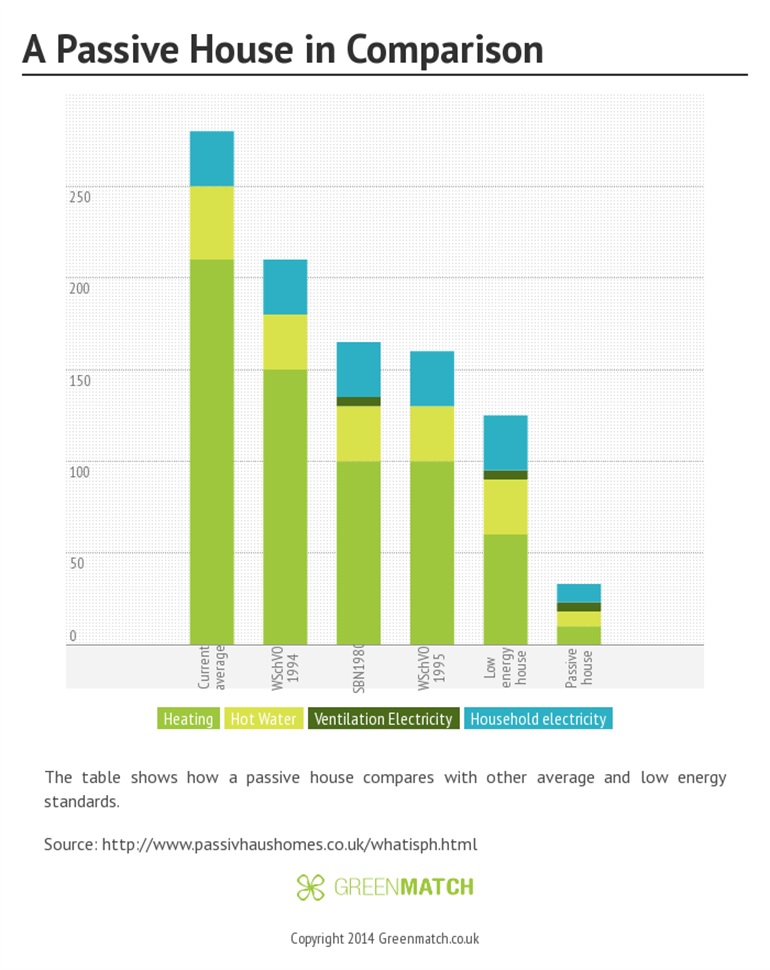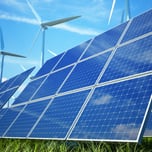- GreenMatch
- Sustainable Construction
- Passive House
Passive House
Information about a Passive House
When planning to build a house, we obviously pay close attention to factors such as costs, architectural design, as well as how comfortable and how functional it will be. But more and more often we find ourselves thinking about energy efficiency. If we want to have a house that looks good, is comfortable and highly energy efficient, we might want to consider building or transforming our current house into a passive house. But what exactly is a passive house? A passive house is a building standard that is affordable, comfortable, and at the same time, energy efficient and environmentally friendly. This article will provide you with information on how you should proceed regarding building a passive house, the costs associated with construction, and how you can benefit from a passive house, as well as many other useful tips.
What Is a Passive House
A passive house is a concept that originated from Germany, where it's known as Passivhaus. It is important to note that a passive house is not a brand name, but a construction concept that can be applied by anyone—commercial buildings as well as residential houses. A passive house is built so that it is very energy efficient and comfortable at the same time without using a traditional heating system or active cooling. The passive house uses passive heat sources—the energy of the sun, the heat from running household appliances, and the extracted air—in order to cover most of the heating demand. The remaining energy needs in a passive house should be supplied by renewable energy sources, such as solar panels or heat pumps. The active utilisation of this existing energy is one of the main characteristics associated with a passive house. Passive houses optimise thermal gain, at the same time minimise thermal losses. By using existing temperature, the required heating energy of a passive house is 90% lower than the energy needed for a conventional home.
Requirements for a Passive House
There are certain specifications that a house needs to fulfil in order to be considered a passive house. There are three basic requirements for a passive house:
- a passive house needs to have heating demands lower than 15 kWh per square meter annually (kWh/m²a).
- a passive house needs to have primary energy demands (such as warm water, heating, house appliances) lower than 120 kWh/m²a.
- a passive house must pass a pressure test and the pressure must be limited to 50 Pascals with the pressure differential not exceeding 0.6 times a room’s volume per hour (n50 < 0.6 h-1).
In order for a passive house to be able to have such low energy demands, it needs to be built in a certain way. A passive house needs a high level of insulation, ‘thermal bridge free’ construction (a thermal bridge is heat transferred through a poorly insulated part of a wall), airtight windows and doors, a mechanical ventilation system with heat recovery and heat efficiency, and it needs to make use of passive solar gains. Moreover, a passive house should also have low energy appliances and energy-efficient lights.
Why Build a Passive House?
By investing in a passive house, you can benefit from reduced heating bills, and at the same time, have a positive impact on the environment. A passive house is a sustainable construction that provides you with a 75% reduction in space heating requirements when compared to traditional households. Along with savings on your heating bills, by building a passive house you will not be using fossil fuels and therefore reduce carbon dioxide emissions. A passive house provides you with an evenly warm and constant climate.

Tips for Building a Passive House
A passive house concept is a sustainable construction concept that provides affordable, comfortable, healthy conditions in a high-quality building. But it may seem a little tricky to build a passive house. However, with a set of basic rules, that you should follow when you want to invest in a passive house, it becomes much easier. When building a passive house you must remember that:
- A passive house must be facing South, due to the fact that such a building needs solar gain as one of the main sources of heat. You have to remember that you need to install large windows on the South side of your passive house, with as little glazing towards North as possible.
- Also, keep in mind that no trees or chimneys must cast shadows on your passive house, as it is very much dependent on the heat generated by the energy of the sun.
- There must be a high level of insulation in the passive house, and this is something you should pay close attention to, as it is the proper insulation that keeps the passive house warm during the winter.
- In addition to super insulation, a passive house requires a highly air-tight construction. Every element of a passive house makes sure, that the heat generated in the house is secured, therefore you have as little thermal loss through the windows and doors as possible. Pressurisation tests are able to determine, whether your passive house has a right air-tight construction.
- Following the idea of an airtight construction, we have to make sure that our passive house has triple glazed windows, doors and roof lights with insulated frames.
- Because a passive house must be very airtight, you have to make sure that it also has a proper ventilation, to ensure a constant supply of fresh air. This is achieved by installing a heat recovery ventilation system.
Thinking about Building a Passive House?
Did you found the idea behind the passive house interesting? Whether you are just interested in passive houses or planning to build one, we can make the process easier for you. How does it work? Simply fill out the form on this site and we will contact you with up to 4 suppliers. You will have the opportunity to discuss your needs with the suppliers, but more importantly, they will help you get your dream passive house. Remember that our service is free and without any obligations.
We strive to connect our customers with the right product and supplier. Would you like to be part of GreenMatch?


